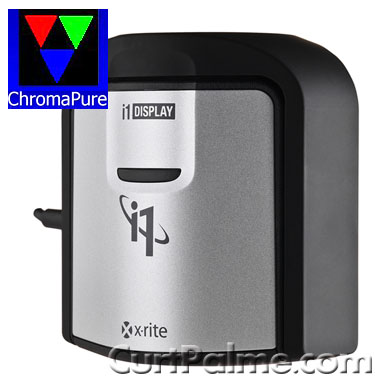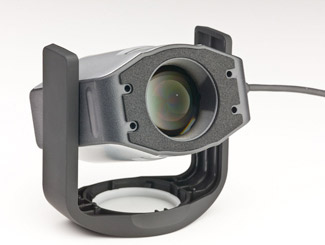We've worked out an
exclusive deal for our members to bring you this product at
a price lower than what everyone else pays anywhere on the internet. Buy direct
from our ChromaPure partner at prices lower than buying off their own website. Same product,
same support, just more money in your pocket at the end of the day.
If you have been interested in calibrating your own displays but have been
deterred by the high cost of colour meters and good software, these bundles are for you.
Finally, professional quality results at a non-pro price.
New to calibration? Give our
free step by step guide a read:
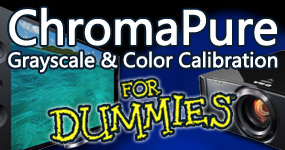
Confused about meters? See our
FAQ: Which meter
is right for me?
X-Rite’s new EyeOne Display 3 colorimeter (officially called the i1Display Pro
/ i1Display Pro Plus) is truly groundbreaking. It
performs three times faster and read lower light levels better than the
Chroma 5, all at a lower
cost.
It's not simply a successor to the
Display 2, the Display 3 is based on a
completely different design and offers a price/performance profoundly superior
to the Display 2. In fact it's profoundly superior to any colorimeter at
anywhere near the MSRP price of $299.
It is also one of the easiest devices to use because it requires no dark
reading calibration. By comparison, the
Display 2 requires a dark reading when
the meter is initially connected. The EyeOne Pro and
Hubble also require an
initial dark reading plus periodic dark readings throughout the calibration
session.
The Display 3 PRO takes the regular Display 3 one step further and offers professional grade
accuracy at a price affordable to the amateur hobbyist or enthusiast. Our tests show that
the Display 3 PRO offers accuracy for colour and the white point that in the
majority of cases exceeds that of the
EyeOne Pro spectroradiometer. Furthermore, its luminance readings are far superior to the
EyeOne Pro, both in terms of
general accuracy and certainly in dynamic range. (Complete details below)
Quite simply, we believe that this meter is the best sub-$1000 meter for video
calibration on the market today. Is it a true reference device? No. But at this
price it comes as close as any device we are aware of to this standard.
Features
- Excellent low-light performance (real-world
performance shows good results down to approximately 0.003 cd/m2)
- No dark reading
- Built-in tripod mount
- Built-in hinged high-quality diffuser
- Very good accuracy
- Extremely fast
- Available in PRO configuration, which
enhances accuracy even more
Design
The Display 3 is an enclosed, non-contact device similar to much larger and
more expensive colorimeters, such as X-Rite’s own
Hubble or the
Klein K-10a. Light enters
the unit through a lens and is focused onto filtered photo-sensitive diodes. The
diodes transmit discreet electrical signals representing red, green, and blue.
The advantage of this design over contact meters (such as the
Display 2 or
Chroma 5) are
many:
- The lens is able to capture and focus more
light onto the filtered diodes, which provides much better low-light
sensitivity and much faster readings.
- Because the filters are completely
enclosed, they are less likely to deteriorate as a result of exposure to
environmental factors.
- The non-contact design is conducive to
measuring front projectors, remains isolated from the heat of plasmas, and
doesn't risk damage to LCD screens.
- The Display 3 also includes a built-in
hinged diffuser that swings in and out of place easily for measuring
illuminance directly from a front projector’s lens. Unlike previous
products, this diffuser is colour neutral allowing for accurate readings in
illuminance mode. Off screen readings are still the preferred method for
measuring front projectors, but at least one can now measure from the lens
without having to colour correct the results.
The only drawbacks to this non-contact design are that it requires the extra
expense of a tripod and it is more sensitive to contamination from ambient
light. To address this, X-Rite designed the meter so that it can be used in
contact mode as well. It has a counterweight firmly attached to the USB cable.
Performance
After testing for some time we've been nothing short of amazed at the level
of performance it provides at its price point. Despite the fact that this
colorimeter is a successor to the Display 2, it so vastly outperforms the
Display 2 that a better comparison is probably the Chroma 5.
Speed:
See
Video (1:17)
The Display 3 is extremely fast. In fact below 10 cd/m2 we actually slow the
unit down to improve repeatability. Above 10 cd/m2 its speed is comparable to
the Klein K-10a and X-Rite Hubble,
each of which costs several thousand dollars.
To test the Display 3’s speed, we used it for a complete auto-calibration run
in ChromaPure. The process took 7.5 minutes to complete. The
Chroma 5 clocks in
at 23.5 minutes. This indicates that the Display 3 is about three times faster
than the Chroma 5. To confirm this, both were run through a full grayscale run.
See the video above which confirms the auto-calibration findings.
Low-light Sensitivity:
See
Video (2:18)
Another area in which the Display 3 excels is low-light sensitivity. The
Chroma 5 is rated down to 0.01 cd/m2 and this seems about right. However, the
Display 3 will read light that is one-third as bright. To test this we used the
AccuPel DVG-5000 video test pattern
generator to feed increasing lower intensity signals to a Pioneer Kuro,
the champ of low black-level displays.
The results of this test confirm that the Display 3 reads down to 0.003 cd/m2,
or 0.001 fL.
Consistency:
See Video
(1:23)
One of the most important aspects of a colorimeter's performance is its
ability to return stable and consistent readings, especially at low light
levels. We worked very hard to implement support for the Display 3 in such a way
that ensures this. Here’s the Display 3 reading a 30%, 20%, and finally a 10%
stimulus test pattern off of the screen from a front projector. As you can see
in the video above, the consistency of the Display 3’s readings, even at very
low light levels, is exemplary.
Colour Accuracy
This performance parameter can only be finally determined after sampling a
large number units. Often, the biggest variable in a meter's colour accuracy is
the unit-to-unit variation resulting from mass manufacturing with affordable
materials. We can say that the production units tested are excellent in this
regard. The Display 3 shows errors no higher than xy0.006 for both colour and
white relative to a $10,000 reference spectroradiometer. This is performance
comparable to a stock Chroma 5.
It will take time before we can determine for certain the extent to which
this level of performance can be maintained and, more importantly, how well the
accuracy holds up over time. We believe that because the filters are in a sealed
container that the Display 3 will age much more gracefully than either the
Display 2 or
Chroma 5. However, as with any filter-based device it will always
benefit from calibration against a reference spectroradiometer.
Summary
The X-Rite Display 3 is a truly revolutionary product. It offers near
professional performance at a price affordable to any enthusiast. In fact, its
performance is so close to professional colorimeters, such as the
Klein K-10a or
X-Rite’s own Hubble, than it has
become extremely difficult to justify purchasing such devices that come in at
10-20 times the cost of the Display 3. The Display 3 is not perfect. At low
light levels, its otherwise blazing speed slows down considerably. Also, we
would really have liked to see some type of aiming device, similar to the laser
on the Hubble. However, this would
have no doubt increased the cost of the unit.
The colour analyzer is often the weakest link in measuring and adjusting a
display device. Because of the unprecedented price/performance ratio of the
Display 3, we would argue that it is among the most important products ever
developed for display calibration.
Is the EyeOne Display 3 meter modified in any way?
No. The meters sold by us are NOT password protected or altered in any way,
so they may be used with other software products.
Some vendors password-protect or alter meters such that their software will
only work with meter(s) sold by them as well as not allowing their meter(s) to
work with other software.
As a policy we do not password-protect or alter the meters we sell in any
way. Once you purchase a meter from us, it is yours to do with as you wish.
What is the difference between the OEM And the retail (boxed) version of the Display 3
meter?
We offer both the OEM and retail (boxed) versions of the Display 3 meter in
our ChromaPure software packages.
Both meters are identical and both work with ChromaPure.
The retail (boxed) version differs in that it includes software from X-Rite
that allows you to quickly and automatically calibrate PC/Mac monitors. All
changes are done and stored in the computer by the X-Rite software through the
creation of .ICC profiles - the monitor itself is not adjusted. (Similar to how
ChromaPure auto-calibrate
works with the Radiance
video processor to automatically calibrate home theater displays).
To order the retail version, make sure to order the separate "UPGRADE" option
at the same time as your Display 3 / ChromaPure package.
What software can I use to do PC/Mac monitor calibration?
If you wish to do PC/Mac monitor calibration we suggest ordering the retail
(boxed) version of the Display 3 meter as it includes software from X-Rite to do
automatic PC/Mac monitor calibration. To order the retail version, make sure to
order the separate "UPGRADE" option at the same time as your Display 3 /
ChromaPure package.
If you already own the OEM Display 3 we suggest using BasICColor software to
do PC/Mac monitor calibration.
Can my Display 3 be recalibrated?
Yes. For the same modest fee, your Display 3 can (and should) be periodically recalibrated to the same PRO
level to ensure it retains its initial accuracy. This service eliminates the
problems associated with exposure to the elements over time. We recommend
doing this yearly. See our BUY NOW buttons above. You pay for shipping to
us and for US customers we pay for shipping back to you. (International
customers pay shipping in both directions)
The service includes a certificate of calibration that itemizes all the
corrections that were applied to the meter.
Recalibration is the same as upgrade to PRO. The same steps are performed.
Can I calibrate front projectors?
Yes. For best accuracy, we recommend calibrating
front projectors by taking readings directly off the screen. However, for those
who wish to take readings directly from a projector's lens, the Display 3 offers
a built-in colour neutral diffuser.
What is the
EyeOne Display 3 PRO?
While groundbreaking, the Display 3 (i1Display Pro/i1Display Pro Plus) is still a relatively low cost
mass-market device whose tolerances are looser than what you would find with
more expensive professional colour analyzers.
Our ChromaPure partner has developed a version of the Display 3 which we've named the Display
3 PRO, that offers
substantially enhanced accuracy across multiple display types including:
- Generic LCD
- Samsung Standard LCD
- Samsung LED
- Sony Standard LCD
- Sony LED
-
LG LED
-
LG
Standard LCD
- DLP Rear projection
- CRT
- Plasma
-
LED Front
Projection-Screen
-
LED Front
Projection-Lens
- Front Projection-Screen
- Front Projection-Lens
- OLED
-
Quantum
Dot (QLED)
-
Laser
Projector-Screen
-
Laser
Projector-Lens
What they have done is provide a software-based refinement to and expansion
of the existing calibration tables in the individualized license file delivered
with each unit.
To understand how this works, it is important to first understand the source
of errors in tristimulus colorimeters.
In an attempt to accurately model human colour vision, in 1931 the CIE defined
the standard observer, which is characterized by three colour matching functions,
shown below.
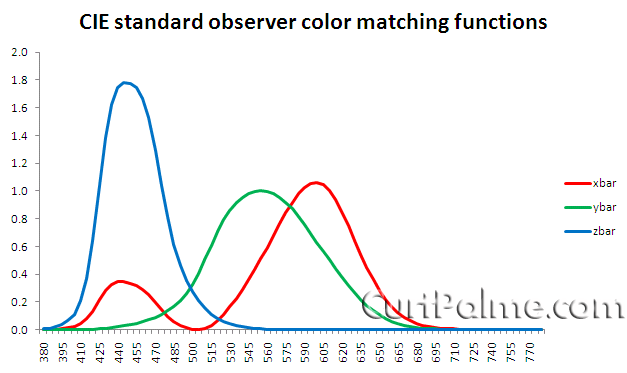
A filter-based colorimeter attempts to mimic human colour perception by
matching these curves. However, accurately matching these complex curves using
any reasonably affordable filters requires correction with a reference
spectroradiometer. Otherwise, you cannot achieve the desired accuracy with
different display types. A spectroradiometer does not rely on filters as a way
of mimicking human colour vision, but rather measures the spectra of a display
directly. Its accuracy depends only on the bandwidth, sensitivity, and
resolution of the device.
The inaccuracies of a filter-based colorimeter arise
from a variety of sources.
- The standard modes that the factory Display
3 ships with are based on a generic correction from a reference device. The
same correction is applied to all Display 3's.
- There may be some unit-to-unit variation.
This was certainly true of the Display 2. Only extended experience will
reveal the degree of unit-to-unit stability that the stock Display 3 offers.
- The instrument's accuracy may decline as it
ages. However, because it is essentially a non-contact design whose newer
generation filters are installed in a sealed environment, it will likely age
more gracefully than previous models, such as the Display 2 and Chroma 5.
- There is a natural variation in consumer
displays—even displays of the same type!—so the operating modes of the
colorimeter are no more accurate that these variations allow. The
calibration tables of the factory Display 3 can only be derived from the
general performance characteristics of the display type, not the specific
display being calibrated.
Taken together, these four sources of inaccuracy—generic factory calibration,
unit-to-unit variation, degradation from aging, and a lack of consistency among
displays—result in a device that, on average according to our tests, typically
deviates from a reference spectroradiometer in the range of 2-9 dE (CIELAB),
depending on the display type and age of the probe. Our PRO version of the
meter will cut this source of error in half.
Of course, the best way to minimize these errors is to use your own reference
spectroradiometer to correct the Display 3 for each calibration session on a
single display. ChromaPure provides an Meter Correction module for just this
purpose. However, the vast majority of consumers cannot afford a true reference
device, which are very expensive. SMPTE requires a reference instrument to have
a minimum accuracy of ±0.002 for the measurement of xy chromaticity coordinates
at any luminance above 3 fL. The only instrument capable of this level of
precision is a 5nm spectroradiometer. A tristimulus colorimeter will not offer
this level of accuracy, nor will an 8nm or 10nm spectroradiometer.
The Display 3 PRO virtually eliminates 3 of the 4 sources of error and
lessens the fourth for a small fraction of the cost of a true reference device.
- First, we individually test each meter
against a reference spectroradiometer on a CRT, several LCD flat panels, a
plasma flat panel, and front projector with a standard UHP lamp in both
luminance and illuminance modes.
- Second, we include correction figures in
the individualized license file that align the standard Display 3's response
to our reference device. These two steps alone greatly improve the built-in
calibration tables for the Display 3 and completely eliminate any
unit-to-unit variation.
- Third, for a modest fee, we will
periodically re-calibrate your Display 3 PRO to ensure it retains its
initial accuracy. This service eliminates the problems associated with
exposure to the elements over time.
The Display 3's accuracy is reasonably consistent when reading CRTs, plasmas,
and front projector screens. The biggest problem by far lies with LCDs. Using
the Standard mode the Display 3 may read one LCD very accurately and yet be
considerably off on another. There simply is no consistency when reading LCDs.
Contrary to one widely-repeated myth, this is not an issue directly related to
the difference between CCFL backlit and LED backlit displays. Some LED displays
actually give the Display 3 less trouble than their CCFL counterparts. Also, the
Display 3 can maintain considerably different levels of accuracy when comparing
two CCFL displays. The problem isn't with LED backlighting. The problem is LCDs
period. To address this problem, the Display 3 PRO ships with multiple different LCD
modes. We may add additional LCD modes as needed.
How does the Display 3 PRO compared to SpectraCal's C6?
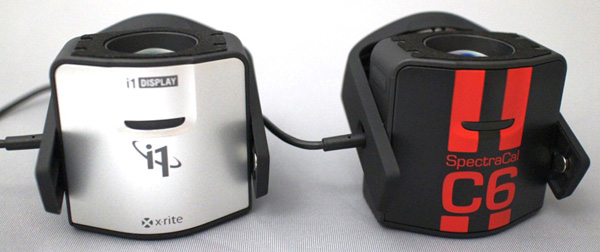
Both use the same X-Rite i1 Display Pro hardware and have similar read
speeds. Both have increased accuracy over the stock meter, but how this is done
is different: The C6 uses the same generic offsets for all meters, while Display
3 PRO meters are all individually calibrated (since meters will have different
errors). The Display 3 PRO will work with any
software that supports the stock i1 Display Pro, while the C6 will only work
with SpectraCal's software. The C6 comes with custom labelling (the red stripes), the Display 3
PRO does not. The C6 is more expensive.
For an in-depth look at the differences, please see our
FAQ: SpectraCal
C6 vs. ChromaPure Display 3 PRO.
What's included The Display 3 ships together with ChromaPure software.
The retail
package comes with X-Rite's Windows/Mac
software which is used to calibrate any computer display quickly and
automatically. The Display 3 has a built-in tripod mount (for
use with any camera tripod) and hinged high-quality diffuser.
Calibration DVD For your convenience our ChromaPure
partner offers a simple
calibration DVD that includes all of the test patterns that you'll need to
perform a complete calibration of your display. This DVD is offered free as a
complementary download.
Click here to download the DVD
Instructions:
- Download the .zip file to your PC.
- Unzip the contents, which is an .iso DVD image file, to
your hard drive.
- Double-click the .iso file.
- If you have DVD burning software (e.g., Nero Burning
ROM), the file will open.
Set the image type to DVD (not CD) if necessary.
- Insert a blank, writable DVD into your DVD burner, and
then burn the image.
Reviews/Testimonials
For reviews/testimonials of ChromaPure calibration software & packages, see our
ChromaPure order page.
Why buy from CurtPalme.com?
CurtPalme.com are calibration experts and authors of the popular
free calibration guide:
Grayscale & Colour
Calibration for Dummies. We live and breathe calibration. No matter what
your needs we can assist in choosing what's right for you. We offer products for
the budget DIY'er all the way up to the seasoned professional, all at CurtPalme.com
discounted prices.
Warranty
All X-Rite meters are backed by a strong one-year warranty. Click
here
for full X-Rite warranty details.
Pictures

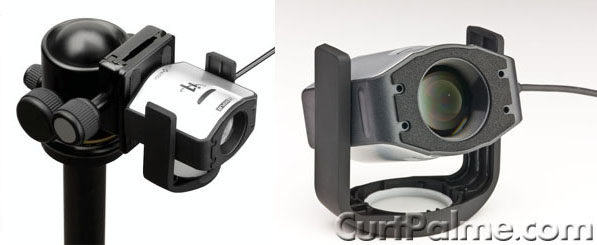
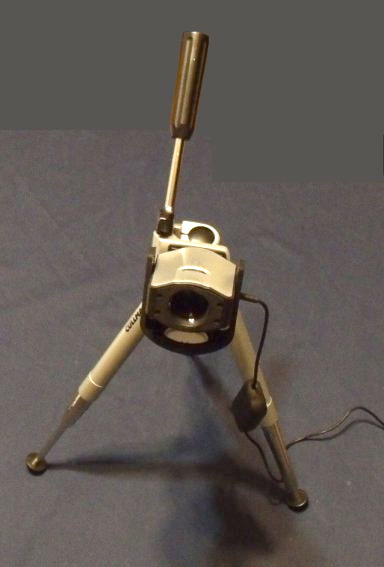
Links
ChromaPure software
ChromaPure
Grayscale & Colour Calibration for Dummies
Official EyeOne Display3 & Display 3 PRO forum thread
ChromaPure Discussion/Support Forum
FAQ: Which meter
is right for me?
FAQ: SpectraCal
C6 vs. ChromaPure Display 3 PRO
Colour
Science: About Meter Accuracy
Colour Science:
Video Calibration Myths
Questions, comments or feedback should be directed to
:
chromapure@curtpalme.com
|

